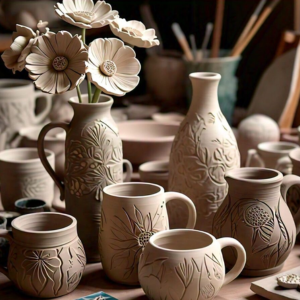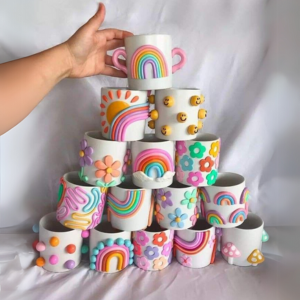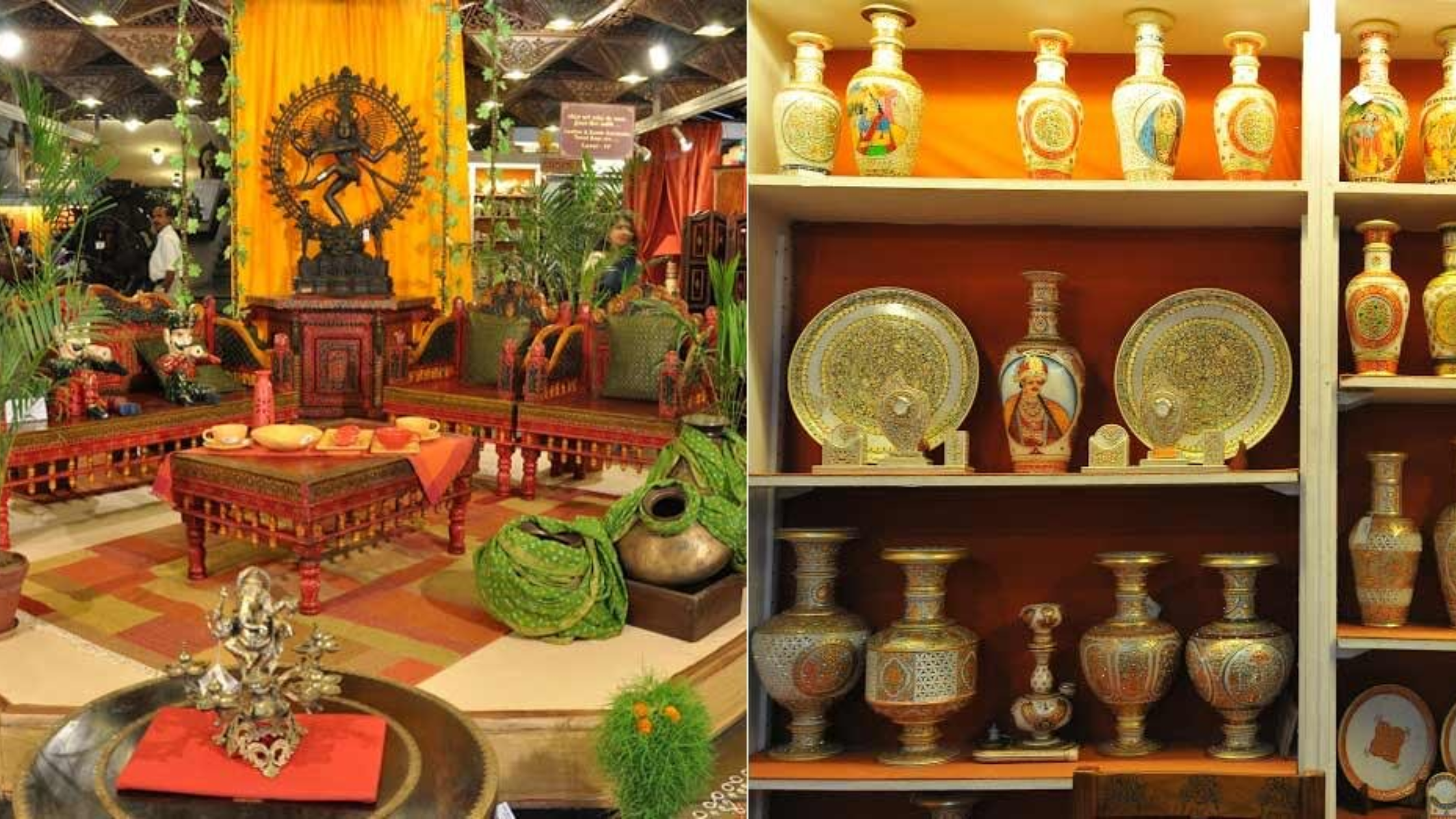In recent years, the world of handicrafts has undergone a remarkable transformation. Once regarded as mere relics of bygone eras, handmade products have blossomed into coveted treasures, celebrated for their artistry, craftsmanship, and distinctive charm. As the market becomes inundated with mass-produced goods, discerning consumers are increasingly drawn to handmade items for their authenticity, superior quality, and sustainable appeal. This growing passion for handicrafts mirrors a broader societal shift toward valuing craftsmanship, individuality, and environmental consciousness. But what lies at the heart of this shift, and what elevates unique handmade items above the sea of mass-produced alternatives?
In this blog, we will journey through the enchanting realm of handicrafts, exploring the compelling reasons behind the soaring popularity of handmade products. From the deep connection with artisans to a steadfast focus on sustainability and an earnest pursuit of authenticity, the world of handmade goods holds far more than meets the eye. Join us as we dive into the vibrant universe of handicrafts and uncover why buying handmade is increasingly becoming the preferred choice for many consumers.


The Charm of Handmade Products
Before delving into the reasons for the rise of handmade products, let’s pause to savor their intrinsic allure. Handmade goods possess an undeniable magic; they exude a sense of individuality that factory-made items simply cannot replicate. Each piece is a testament to an artisan’s skill, creativity, and personal touch, transforming simple materials into works of art.
Unlike mass-produced goods that are churned out by machines, handmade items are often one-of-a-kind treasures, each imbued with the unique personality and story of the maker. Whether it’s a beautifully handwoven rug, a set of exquisitely hand-carved wooden utensils, or a delicately painted ceramic vase, the craftsmanship behind these items lends them character and soul. This authenticity is a profound allure, drawing people closer to the enchanting world of handmade creations.
Handicrafts often narrate a story of their own. From the age-old tools employed to the techniques that have been lovingly passed down through generations, every handmade item stands as a testament to the artisan’s unwavering dedication to their craft. When you acquire a handmade piece, you’re not merely purchasing a product; you’re forging a connection with the culture, history, and passion woven into its creation. This sense of authenticity is what makes unique handmade items truly special.
The Growing Popularity of Handicrafts
In today’s fast-paced, consumer-driven society, the ascendant popularity of handicrafts may seem like an unexpected turn. Yet, as consumers become more discerning about their purchases and their motivations, the allure of handmade products has surged to unprecedented heights. Let’s explore some of the pivotal reasons fueling this remarkable rise.
1. A Shift Toward Sustainability
One of the most significant catalysts behind the growing adoration for handicrafts is the heightened consumer awareness surrounding environmental issues. As climate change and sustainability take center stage on the global agenda, individuals are actively seeking ways to lessen their carbon footprints and embrace eco-conscious choices. Mass production, particularly in the fast fashion sector, is notoriously detrimental to the environment, resulting in pollution, waste, and the exploitation of finite natural resources.
In sharp contrast, handmade products are often crafted from sustainable materials, with a production process that is typically on a smaller scale and far more considerate of its ecological impact. Artisans dedicated to their craft often utilize natural or recycled materials, repurpose existing items, and consciously avoid harmful chemicals and excessive packaging. This commitment to eco-friendly craftsmanship resonates deeply with environmentally-conscious consumers, who are striving to make mindful choices.
Additionally, the art of handicrafts nurtures a circular economy, prioritizing goods crafted to last and be cherished across generations. In an era dominated by throwaway culture, choosing handmade items represents an alternative paradigm that emphasizes longevity and quality over sheer quantity.
2. Supporting Local Artisans and Small Businesses
Another powerful motivator behind the rise of handmade products is the desire to uplift small businesses and local artisans. In a marketplace often dominated by sprawling multinational corporations, consumers are increasingly eager to support independent creators and makers. By purchasing handmade goods, buyers are directly contributing to the livelihoods of artisans, many of whom depend on their craft for financial stability.
This growing appreciation for local artisans and small-scale producers also plays a crucial role in preserving traditional crafts and cultural heritage. Many handmade products are crafted using time-honored techniques, lovingly handed down through generations, and buying these items helps to keep these rich traditions alive. Moreover, small-scale producers typically maintain transparency in their production processes and adhere to ethical labor practices, making them an admirable choice for conscientious consumers.
Through every stitch, carve, or brushstroke, the resurgence of handmade products invites us to reconnect with artistry, authenticity, and sustainability in our fast-paced world.
2. Personalization and Uniqueness
In a world inundated with mass-produced items, many individuals yearn for the charm of personalized and unique handmade treasures that embody their distinct taste and identity. Unlike the uniformity of factory-made products, which are often churned out in vast quantities, handmade creations provide an exceptional opportunity for customization. Imagine having a delicate piece of jewelry engraved with your initials, selecting a vibrant color palette for a hand-painted canvas that adorns your wall, or commissioning a unique piece of furniture meticulously designed to complement your living space. This remarkable level of personalization allows buyers to curate items that resonate with their individual preferences and desires, forging a deep sense of ownership and a heartfelt connection to each piece.
Beyond mere aesthetics, unique handmade items frequently come with rich narratives—perhaps the inspiration behind a vibrant painting, the cultural heritage of a traditional artisan’s craft, or the personal journey of the maker. These stories imbue the product with added significance, transforming a simple acquisition into a meaningful investment in someone’s creative journey. When you choose handmade, you are not just acquiring a physical object; you are embracing a piece of art infused with passion and purpose.
4. Craftsmanship and Quality
Another compelling reason behind the rising appeal of handicrafts lies in the extraordinary craftsmanship and superior quality of handmade products. Unlike mass-produced items, which are often manufactured rapidly and with subpar materials, handmade goods are a testament to meticulous skill and artistry. Artisans who dedicate themselves to their craft invest time, care, and passion into creating high-quality items designed to endure the test of time.
5. A Sense of Connection
Lastly, one of the most compelling motivations for purchasing handmade items is the profound sense of connection they foster. When you invest in a handmade product, you are cultivating a bond between yourself and the artisan. Unlike the faceless products of mass production, handmade goods often come with a personal touch and a rich narrative that ties you to the individual who crafted them.
This connection resonates deeply in our modern lives, where many feel increasingly distanced from the origins of the products we consume. By choosing handmade, you are not merely acquiring a tangible item; you are supporting a person and their craft, infusing your purchase with personal meaning. This intimacy is what makes handmade goods so extraordinary—they encapsulate not only the artistry of their creator but also the shared appreciation between the maker and the buyer.
Why Buy Handmade?
There are countless reasons to embrace handmade products, each more compelling than the last:
- Support Small Businesses and Local Artisans:By purchasing handmade, you nurture small-scale creators and their communities, helping to ensure that traditional crafts remain vibrant and alive.
- Eco-Friendly and Sustainable: Many handmade products are crafted with eco-conscious materials and sustainable practices, contributing to the reduction of waste and environmental impact.
- Customization and Uniqueness: Handmade items provide an opportunity for personal expression, allowing you to claim ownership of distinctive pieces that reflect your individual style.
- Superior Craftsmanship and Quality: Handmade products are often built to last, exhibiting careful craftsmanship and the use of premium materials that ensure longevity.
- A Deeper Connection: Buying handmade allows for a meaningful connection with the artisan and their craft, enriching your purchasing experience.
Conclusion
The resurgence of handicrafts is a deserving celebration, fueled by a collective desire for authenticity, sustainability, and individuality. As consumers increasingly gravitate toward handmade products, they not only champion superior craftsmanship and quality but also uplift artisans and their communities. This growing appreciation for handicrafts serves as a powerful reminder that amid the overwhelming tide of mass production, there remains a cherished space for unique, handmade items that narrate stories and capture the passion and skill of their creators. So, the next time you find yourself searching for something special, consider the enduring value of choosing handmade—because when you select handmade, you are choosing more than just an object; you are embracing artistry, culture, and sustainability.


Leave a comment